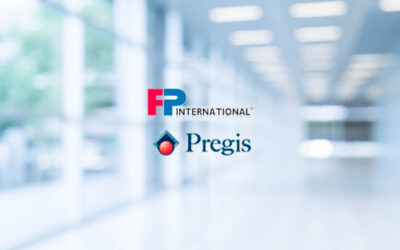The title paraphrases a common nighttime message from my youth. Just before signing off, television stations would ask their viewers: It’s 11pm…Do you know where your children are? It reminds me of a common problem we share in managing our supply chains. We don’t often know the real-time whereabouts of shipments.
Why might that be the case? After all, delivery status updates are ubiquitous. eCommerce merchants email and SMS the order confirmation, shipment date, interim tracking progress at each leg, and now even predict within hours when a parcel will arrive at your front door. Others do less, providing only the tracking number and leaving it up to the customer to check with the carrier on the status of their package.
You may be thinking, “that’s a B2C need, not B2B.” Think again. Two months ago, the massive container ship Ever Given held up over 300 ships for six days after getting stuck on the Suez Canal. If you had a shipment on that or any of those affected ships, how prepared would you have been to know the status and adjust your supply chains and customer expectations to keep them running with minimal disruption?
The unfortunate reality is many companies can’t do this.
Everyone reading this article has likely experienced the letdown of a late delivery. Similarly, you’ve likely faced the fury of a disappointed customer, as well as their delight when promises are kept. As a former supply chain executive, I know how missed deliveries can be extremely embarrassing, contentious, and hell to deal with.
Disruptions and problems are inevitable, but I’ve found that people can deal with bad news as long as they get a heads-up. B2B expectations are starting to mirror that of B2C with the Amazon Effect creeping into all manner of service and transaction. Actually, not creeping but marching at a quick step. Precise tracking and tracing of commercial and industrial shipments is fast becoming the norm.
So why is this important?
A few years ago, at a Chief Supply Chain Officers meeting I attended, a Cisco executive postulated that a 5% increase in customer loyalty yields a 75% increase in net present value of existing customers. My takeaway: small “hits and misses” can make a big difference.
Whether providing services or using services, the implication is the same. As a service provider, one wants to be reliable; and as a user of services, one wants repeatability and dependability from suppliers. The logic here is if you’re able to keep promises to your customers, you become dependable, and that dependability drives repeat business, then that repeat business monetizes lifetime value. Knowing what’s happening in and to your supply chain at every step and touchpoint becomes key to your dependability.
Where to begin?
Being able to see where everything is at each leg of the journey for both customers and consumers is critical – but can also seem overwhelming if you don’t have a way to do it. There’s a reason so many companies lack the ability; achieving accurate, real-time visibility can feel like an enormous challenge when you’re operating with manual systems or a collection of several point solutions. What do you hook up and who do you hook up to?
The road to continuous optimization
Having converted to agile methodology over the span of many years, my advice is to make numerous and continuous small changes. I see it time and again where most companies don’t have the bandwidth to undertake big bang changes. So, don’t. Set yourself up to have a series of short quick wins, each making a measurable difference. It’s a cultural adjustment that starts to take root – the road to continuous optimization.
First, start with what you need to know. We’ve talked before about setting up control towers with end-to-end visibility. What if you can’t get E2E visibility? Deep visibility comes from multi-party trust, something that must be earned; go with what you’ve got and expand as you prove its worth. In the case of logistics, most commercially available control towers are very good, but they typically monitor segments of networks. If your pain points occur outside of those routings, look for a control tower platform that connects the greatest range of systems to span the network more comprehensively – beyond just transportation management.
Second, focus on alerts to unexpected changes. If everything is going per plan, great! I always wanted to know the bad news, the deviations, the surprises – because that’s what requires solving. You need to see what’s going on, but also get immediately notified when the train comes off the track. From there, some control tower platforms are incorporating AI and Machine Learning coupled with smart business rules that help recover affected orders.
However, some disruptions are indicative of greater problems and a workaround isn’t enough. Deal with the solves to the problem. Are they unique or repeat offenders? I’ve recently re-read a book about the Theory of Constraints and how to identify, isolate, and solve bottlenecks. Back when I managed the supply chain and order fulfillment for one of Apple’s subsidiaries, they had me use a software package based on this theory – innovative at the time and still used in many SaaS platforms. Moreover, some visionary SaaS platforms know the difference between “predictive” performance and “probable” performance to ensure you select the best possible partners. Many companies today are still trying to decide how to cope with the changes brought on during the past year, thinking they have a choice to stick with what they have or make the leap to a digital transformation. I suggest there is no choice – to survive one must change. Whatever is invested today in digital transformation, pays for itself many times over.



